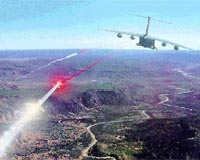 |
Evanston IL (SPX) Apr 29, 2011 Researchers at Northwestern University have created a new kind of cloaking material that can render objects invisible in the terahertz range. Though this design can't translate into an invisibility cloak for the visible spectrum, it could have implications in diagnostics, security, and communication. The cloak, designed by Cheng Sun, assistant professor of mechanical engineering at Northwestern's McCormick School of Engineering and Applied Science, uses microfabricated gradient-index materials to manipulate the reflection and refraction of light. Sun's results will be presented May 4 at CLEO: 2011, the annual Conference on Lasers and Electro-Optics. Humans generally recognize objects through two features: their shape and color. To render an object invisible, one must be able to manipulate light so that it will neither scatter at an object's surface nor be absorbed or reflected by it (the process which gives objects color). In order to manipulate light in the terahertz frequency, which lies between infrared and microwaves, Sun and his group developed metamaterials: materials that are designed at the atomic level. Sun's tiny, prism-shaped cloaking structure, less than 10 millimeters long, was created using a technique called electronic transfer microstereolithography, where researchers use a data projector to project an image on a liquid polymer, then use light to transform the liquid layer into a thin solid layer. Each of the prism's 220 layers has tiny holes that are much smaller than terahertz wavelengths, which means they can vary the refraction index of the light and render invisible anything located beneath a bump on the prism's bottom surface; the light then appears to be reflected by a flat surface. Sun says the purpose of the cloak is not to hide items but to get a better understanding of how to design materials that can manipulate light propagation. "This demonstrates that we have the freedom to design materials that can change the refraction index," Sun said. "By doing this we can manipulate light propagation much more effectively." The terahertz range has been historically ignored because the frequency is too high for electronics. But many organic compounds have a resonant frequency at the terahertz level, which means they could potentially be identified using a terahertz scanner. Sun's research into terahertz optics could have implications in biomedical research (safer detection of certain kinds of cancers) and security (using terahertz scanners at airports). Next Sun hopes to use what he's learned through the cloak to create its opposite: a terahertz lens. He has no immediate plans to extend his invisibility cloak to visible frequencies. "That is still far away," he said. "We're focusing on one frequency range, and such a cloak would have to work across the entire spectrum."
Share This Article With Planet Earth
Related Links Northwestern University The latest in Military Technology for the 21st century at SpaceWar.com
 Northrop Grumman Delivers 1000th Guardian Laser Transmitter Assembly
Northrop Grumman Delivers 1000th Guardian Laser Transmitter AssemblyRolling Meadows IL (SPX) Apr 29, 2011 Northrop Grumman has announced the delivery of the 1,000th Guardian Laser Transmitter Assembly (GLTA) to the U.S. government for use as part of the Department of Navy's Large Aircraft Infrared Countermeasures (DoN LAIRCM) system. DoN LAIRCM is currently installed on U.S. Marine Corps CH-53E helicopters operating in Afghanistan and on ship-based CH-46E helicopters. Northrop Grumman has aver ... read more |
|
| The content herein, unless otherwise known to be public domain, are Copyright 1995-2010 - SpaceDaily. AFP and UPI Wire Stories are copyright Agence France-Presse and United Press International. ESA Portal Reports are copyright European Space Agency. All NASA sourced material is public domain. Additional copyrights may apply in whole or part to other bona fide parties. Advertising does not imply endorsement,agreement or approval of any opinions, statements or information provided by SpaceDaily on any Web page published or hosted by SpaceDaily. Privacy Statement |